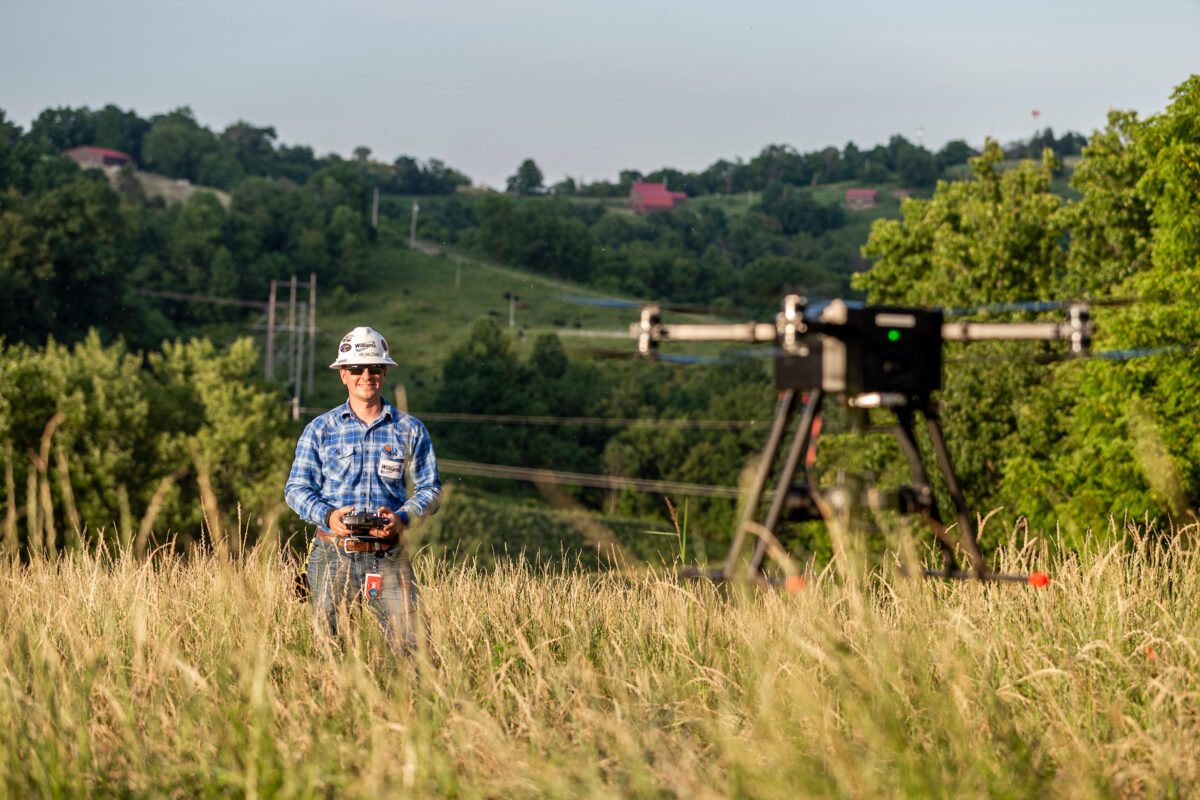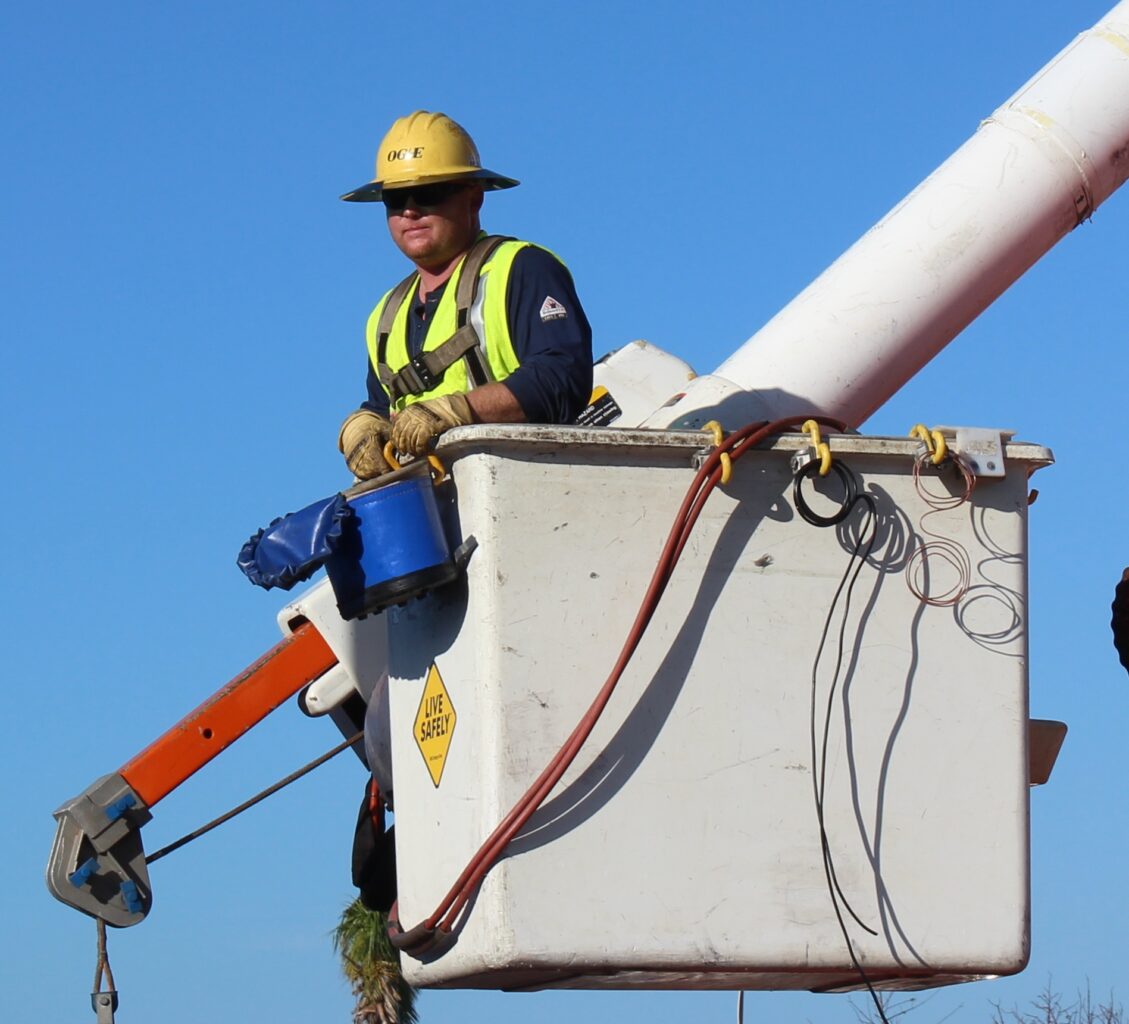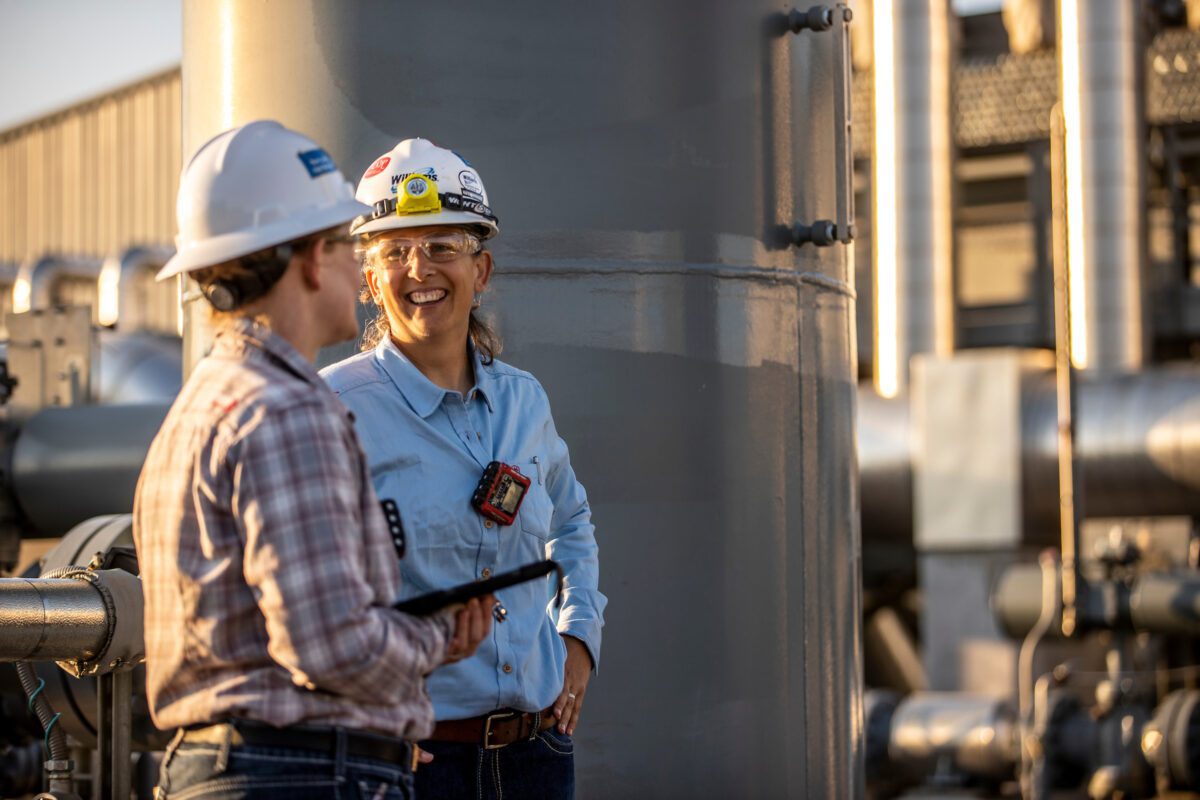Doing a World of Good
Besides the obvious contributions of providing employment and bolstering the state’s economic infrastructure, oil and gas companies help improve the quality of life for all Oklahomans with their employee volunteerism and charitable giving.
“The energy industry does a really fantastic job of supporting the communities including Oklahoma City, where our headquarters are,” says a spokesperson for Expand Energy. “We believe that giving back strengthens the areas that we call home.”
Expand Energy was created by the Oct. 1 merger of Chesapeake Energy Corporation and Southwestern Energy Company and is now the nation’s largest natural gas producer. The company has about 1,000 employees. The headquarters will remain at the longtime Chesapeake campus in Oklahoma City, with another presence of about 420 employees in the Houston area, where Southwestern Energy had been based.
“It’s a very engaged set of employees who have the spirit of innovation,” the spokesperson continues. “Our employees love giving back, it’s the soul and spirit of our company. We are thrilled that we are remaining in Oklahoma.”
An example of its generosity is the community garden space on the company’s Oklahoma City campus, which was donated to the Lynn Institute. The 65-bed garden now hosts programming for youth in the juvenile justice system courtesy the Institute.
Recent gifts from Tulsa-based Williams Companies to the University of Oklahoma will allow OU to grow student support and mentorship programs across the Mewbourne College of Earth and Energy, the Gallogly College of Engineering and the Price College of Business.
Some $500,000 of the gift will support the Mewbourne College of Earth and Energy’s new Sustainable Energy Systems program, which will offer a geoenergy engineering degree with courses in modern sustainable energy.

Williams’ $680,000 investment in the Gallogly College will fund mentorship and development programs including the Engineering Catalyst program and the Wayfinding Program, which offer engineering students personalized support and community to help them thrive.
“Our college relies on industry partners like Williams – not just to keep raising the bar on our academic offerings but to connect our students with top professionals during their time with us,” says the dean of the Gallogly College of Engineering, John Klier. “This remarkable gift will expand so many resources for engineering students, offering them critical academic and community support that is sometimes the only thing standing between a student and a decision not to return to school.”
A $320,000 gift to the Price College will support the Dean’s Speaker Series, the JCPenney Leadership Program, the Center for Management Information Systems Studies and other enrichment programs that provide students with connections to established professionals.
“Williams is investing in the workforce of tomorrow through this gift to the University of Oklahoma, a respected leader in curriculum for energy and related emerging technologies,” says Alan Armstrong, Williams’ president and CEO. “Providing students with educational experiences that are aligned with evolving industry needs creates a pipeline of energy innovators who are ready to help the natural gas industry lead the charge in the clean-energy future.”
A Major Player

Oklahoma is a key player in the oil and gas industry.
In 2023, Oklahoma was the nation’s sixth-largest producer of marketed natural gas. Overall, the state produces almost three times more energy than it consumes, according to the U.S. Energy Information Administration.
Oklahoma’s 5 crude oil refineries had a combined processing capacity of about 547,000 barrels per calendar day in 2023, which is about 3% of the U.S. total refining capacity, the EIA reports. The benchmark price in the domestic spot market for the U.S. crude oil known as West Texas Intermediate is set at Cushing, which is home to about 14% of the nation’s commercial crude oil storage capacity.
Oklahoma has more than 6% of the nation’s total proved natural gas reserves and ranks sixth after Texas, Pennsylvania, Alaska, West Virginia and Louisiana.
“The industry is very important for the nation. It provides national security,” says a spokesperson for Expand Energy. “The U.S. produces probably the cleanest energy in the world. It is very important for us to have energy produced from America, and we are an energy-friendly state.”
Expand Energy is the largest supplier of natural gas to Gulf Coast liquefaction facilities, with production in Pennsylvania, Louisiana, Ohio and West Virginia. The company is becoming more focused on liquid natural gas, which will take its gas globally, the spokesperson says.
“In a world short on energy, billions of people lack access to affordable, reliable, lower carbon energy, which is crucial to human flourishing,” says Expand’s website. “Addressing this crisis is one of today’s greatest global challenges, and we believe natural gas is the best-positioned solution to answer that call. By safely and responsibly delivering critical energy to markets in need, Expand Energy will help address one of the great threats to human prosperity.”
The discovery of oil transformed Oklahoma’s economy. By the time Oklahoma became a state in 1907, it was the largest crude oil producer in the nation, according to the EIA. Important oil and gas conservation practices and organizations trace their origins to the state. In 1935, the voluntary Interstate Oil and Gas Compact Commission, headquartered in Oklahoma City, was created to ensure responsible development of crude oil resources through the coordinated efforts of crude oil-producing states.
Thinking Green
Natural gas plays an essential role in the transition to a low-carbon economy, according to the Tulsa-based Williams.
“With 116 years of experience serving the world’s growing demand for natural gas, we are well positioned to invest in emerging energy opportunities,” the company’s website says. “Since 2018, expansion projects and acquisitions have increased Williams’ energy throughput by 47%, while our emissions intensity decreased by 26%, indicating a strong ability to gather, treat, process, transport and store natural gas with increasing efficiency as we grow.”
Energy provided by renewables increased by three and a half times between 1981 and 2021, according to Expand Energy. Even with this dramatic increase, renewables still only contribute to 12% of the total energy mix. Historic energy demand increases have quickly outpaced the growth in renewable energy, which is why it is essential that the United States continues producing clean, affordable, and reliable oil and natural gas, according to Expand Energy.
“We embrace a lower carbon future as a safe operator and dedicated community partner. It’s why we’re constantly innovating across all aspects of our business, challenging the status quo and driving solutions to make us stronger and more competitive,” the company’s website says.
The Grand River Dam Authority’s environmental stewardship efforts are central to its overall mission, says Justin Alberty, communications director for the GRDA.
“Since 1940, GRDA has been producing renewable hydroelectricity by harnessing the waters of the Grand River at Pensacola Dam. It expanded that effort in the 1960s with the completion of Robert S. Kerr Dam on the river, which also turns the power of falling water into renewable hydroelectricity,” Alberty says.
In 2017, GRDA completed its Unit 3 combined cycle gas generating unit. The facility was the most efficient 60 hertz power plant in the world when it first went online.
Fueled by clean-burning Oklahoma natural gas, the unit took the place of GRDA’s Unit 1 coal generator, which was decommissioned in 2019. In 2012, GRDA also incorporated wind generation into its diverse electric generation portfolio.
“On the water side, the GRDA Ecosystems and Watershed Management Department was established in 2004 to bring a greater focus to stewardship issues in the Grand River watershed. The department is active in many areas including water quality, habitat enhancement, watershed education and conservation and ongoing environmental related research,” Alberty says.
The department has received numerous awards from state and federal entities for its environmentally focused programs such as its Rush For Brush (habitat enhancement) workshops, Guard the Grand Watershed Education Program, conservation easement programs and community education.

Our State’s Electric Utilities
Oklahoma’s electric utilities providers embrace many of the same core values as its gas and energy companies, including environmental stewardship, charitable giving and playing a key role in the state’s economic infrastructure.
The GRDA was created in April 1935 to be a conservation and reclamation district for the waters of the Grand River, says Alberty. Between 1939 and 1940, GRDA constructed Pensacola Dam. The dam, which created Grand Lake, was the first hydroelectric facility in Oklahoma and is still producing renewable hydro power. GRDA provides wholesale electricity to 15 Oklahoma communities, as well as communities in Kansas and Arkansas.
GRDA is Oklahoma’s largest public power electric utility; funded by revenues from electric and water sales instead of taxes, Alberty says. Public power utilities are publicly owned and not-for-profit. It has an environmental stewardship mission over the waters of the Grand and Illinois Rivers and manages over 70,000 surface acres of lake waters.
“The availability of low-cost, reliable and abundant electricity, produced by GRDA, is an attractive inducement for business and industry to establish or expand in the area. Also, GRDA’s stewardship role over so much of Oklahoma’s most valuable water assets supports a thriving tourism and recreation industry, and broad tax base, which rests upon these waters,” Alberty says.
Tulsa-based Public Service Company of Oklahoma is the electric company for more than 575,000 customers in 232 communities across the state. PSO has more than 4,300 megawatts of diverse generating capacity that primarily includes wind and natural gas, says Whitney Emerick, director of corporate communications.
In 2023, PSO’s Fuel-Free Power Plan was approved by the Oklahoma Corporation Commission. The wind and solar projects will add nearly 1,000 megawatts of new power to PSO’s portfolio and result in lower customer bills starting in mid-2026.
American Electric Power’s Feeding Communities initiative focuses on food and housing security across AEP’s 11-state footprint. As part of that effort, PSO partnered with Tulsa-based Food On The Move and its effort to fight food deserts and the legacy issues created by living without food security. In April, PSO and EPRI donated a high-tech container garden that produces fresh produce for Food On The Move’s Community Food and Resource Festivals. In August, the AEP Foundation donated $100,000 to Food On The Move’s Urban Farm project, which will produce 180,000 pounds of fresh produce a year.
Formed in 1902, Oklahoma Gas & Electric (OG&E) is Oklahoma’s oldest and largest investor-owned electric utility.
“We are extremely proud that we have some of the most affordable rates in the country,” the company’s website says.
OG&E serves nearly 900,000 electric customers. It’s the largest ad valorem taxpayer in Oklahoma, contributing $90 million annually, which funds public education, libraries and career techs. Employees also give their time and money to support their communities, the company says.
With about 7,116 megawatts of capacity, OG&E’s generation portfolio represents a balanced approach to generating electricity through a diversity of fuel types – 67% natural gas, 22% coal and 7% renewable energy via solar and wind power.

A Spotlight on Oklahoma Energy
ONEOK
Headquartered in Tulsa, ONEOK is a midstream service provider that connects natural gas liquids supply in the Rocky Mountain, Mid-Continent and Permian regions with a network of natural gas gathering, processing, storage and transportation assets.
Founded in 1906 as an intrastate natural gas pipeline business in Oklahoma, ONEOK is a Fortune 500 company and is included in the S&P 500.
It applies core capabilities of gathering, processing, fractionating, transporting, storing and marketing natural gas and natural gas liquids through vertical integration across the midstream value chain. ONEOK continues to invest in organic growth projects to expand in its operating regions and provide a broad range of services to crude oil and natural gas producers and end-use markets.
ONE Gas
ONE Gas is a 100% regulated natural gas utility and trades on the New York Stock Exchange under the symbol “OGS.” ONE Gas is included in the S&P MidCap 400 Index and provides natural gas distribution to 2.3 million customers in Kansas, Oklahoma and Texas.
Headquartered in Tulsa and founded in 2014, its divisions include Kansas Gas Service, Oklahoma Natural Gas and Texas Gas Service.
Its largest natural gas distribution markets by customer count are Oklahoma City and Tulsa; Kansas City, Wichita and Topeka, Kan.; and Austin and El Paso, Texas. ONE Gas serves residential, commercial, industrial, transportation and wholesale customers in all three states.
Continental Resources
Continental Resources is a top ten independent oil producer based in Oklahoma City.
Continental is the largest producer in the Bakken play of North Dakota and Montana and has significant positions in the SCOOP and STACK plays of the Anadarko Basin of Oklahoma and the Powder River Basin of Wyoming and Permian Basin of Texas.
With a focus on the exploration and production of oil, Continental has technology and resources vital to American energy independence and leadership in the new world oil market.
The company dates to 1967 when Harold Hamm founded Shelly Dean Oil Co., Continental’s predecessor. In 2007, it became a public company via an initial public offering in which Hamm sold $300 million worth of its shares.
Devon Energy
Devon Energy is an independent oil and natural gas exploration and production company with operations focused onshore in the United States.
Founded in 1971 by John Nichols and his son, Larry, Devon has grown from five people to become a major public company with hundreds of employees.
Devon’s second quarter 2024 daily production was 335,000 barrels of oil, 182,000 barrels of natural gas liquids and more than 1.1 billion cubic feet of natural gas. Headquartered in Oklahoma City, Devon is a Fortune 500 company and is included in the S&P 500 Index. Its common shares trade on the New York Stock Exchange under the ticker symbol DVN.
Williams Companies
Williams handles approximately one-third of the natural gas in the United States that is used every day to heat homes and generate electricity. It works with customers to provide the infrastructure to serve growing markets and safely deliver natural gas products to fuel the clean energy economy.
Brothers Miller and David Williams started a construction business in Fort Smith, Ark., in 1908, and within a few years began building cross-country pipelines. In 1918 the business was moved to its current-day headquarters in Tulsa.
In the decades since, Williams has acquired and merged with several other companies to expand its interstate natural gas transportation system and grow its natural gas storage assets. It has paid a quarterly dividend to shareholders without interruption since 1974. Williams common stock (WMB) is listed on the New York Stock Exchange.
What is Fracking?
Fracking, which is shorthand for hydraulic fracturing, is the process of extracting gas or oil deep underground using a high-pressure mixture of water, sand and chemicals to break up rock.
There are downsides to this technique. The drilling maneuver hasn’t resolved the country’s dependence on fossil fuels, for one. Drilling for and transporting gas can lead to the leakage of methane, a greenhouse gas that warms the planet faster than carbon dioxide. Research has also shown that fracking depletes water levels, produces air pollution and generates noise in nearby communities, National Public Radio reports. It’s been linked to drinking water contamination.
Hydraulic fracturing can also trigger minor seismic activity — and the underground disposal of wastewater used in the process has caused larger quakes, according to the U.S. Geological Society.
Those in favor, however, highlight its upsides, according to NPR. It’s allowed oil and gas companies to tap into energy reservoirs that once seemed impossible to develop. The fracking boom has additionally lowered the price of oil and gas around the world, cut U.S. reliance on foreign oil production and brought new jobs.
It’s also helped the U.S. shift away from coal production for power plants and toward natural gas.






















